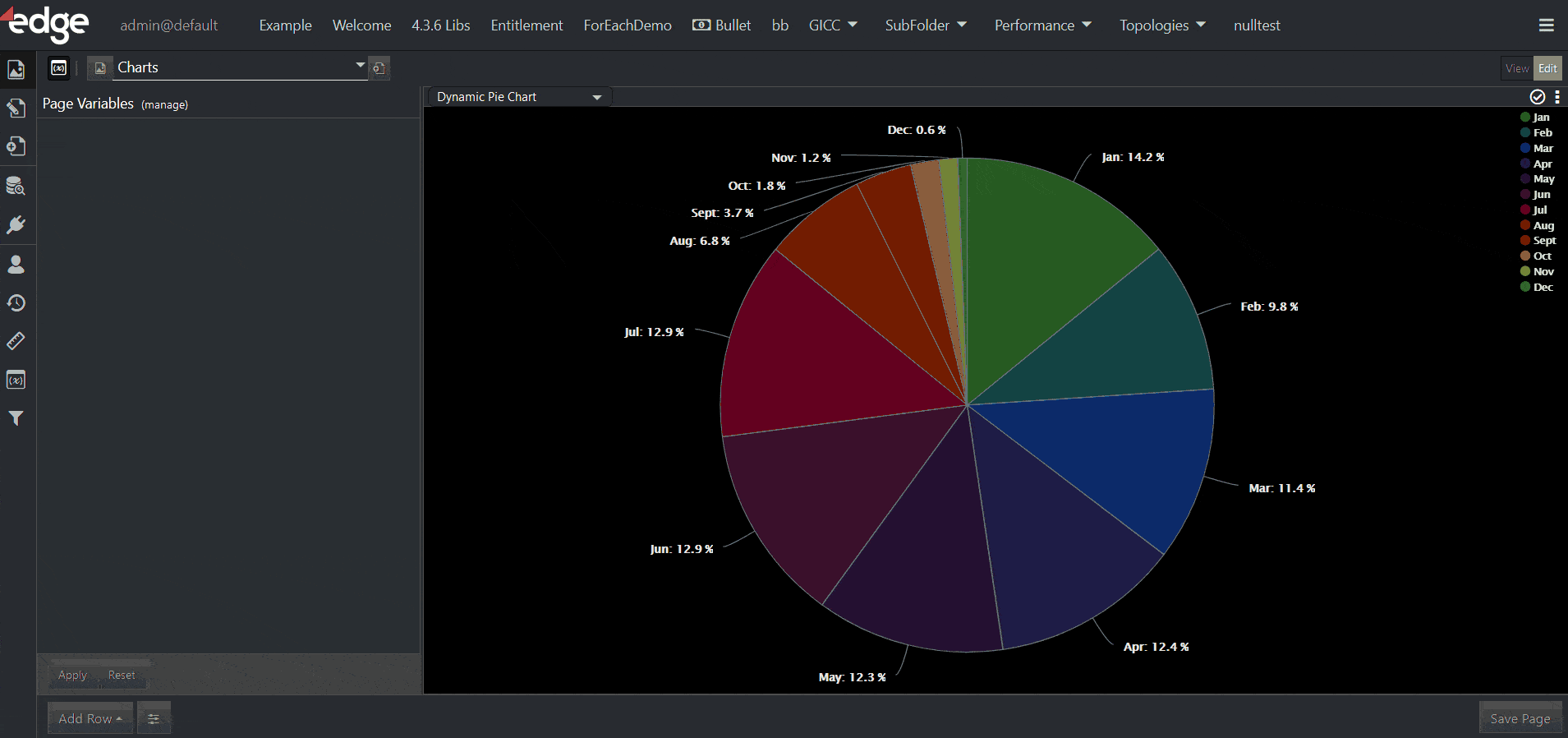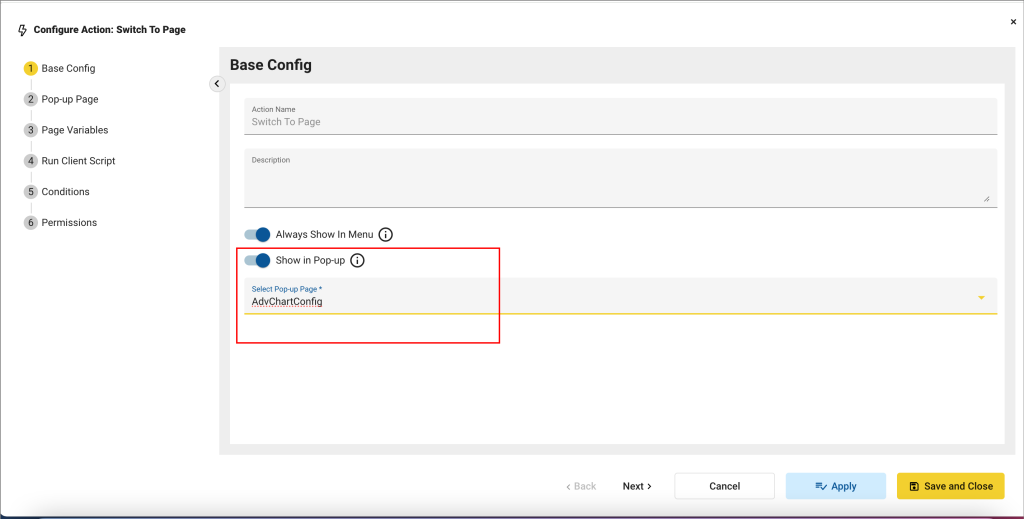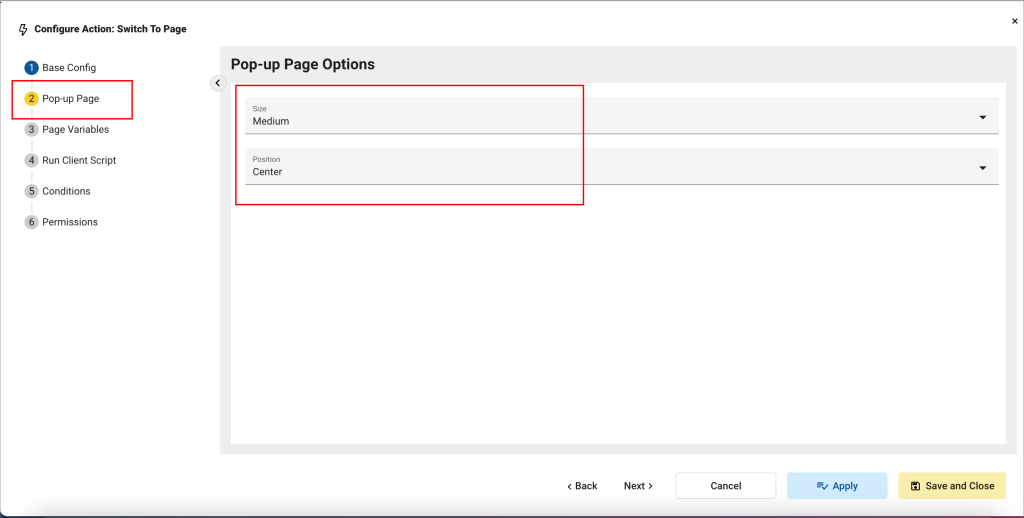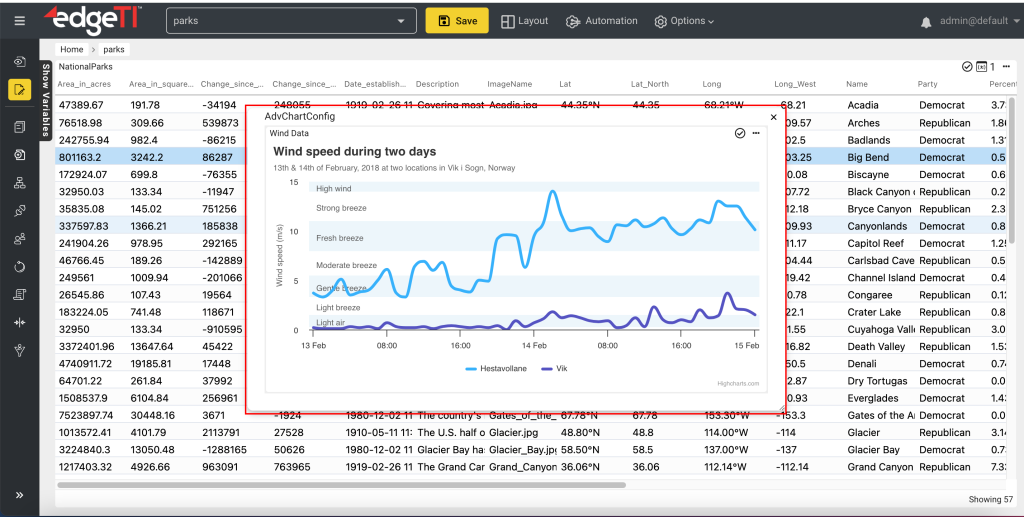The Switch to Page Action allows you to link to another Page in the system. It also extends the Set Page Variable functionality, allowing you to use data values or Page Variable values from the current page and apply them to Page Variables on the target page. This approach allows you to pass context from one page to another.
Step 1: Add Action
Add the action as explained here.
Step 2: Base Config

| Property | Description |
|---|---|
| Action Name | Name that will be used in a context menu if more than one Action is configured for the event |
| Switch to Page | Used to set the target page to switch to when the end-user invokes the Action |
| Breadcrumb Strategy | Used to control how the destination page name is added to the Breadcrumb; – Append: The default behavior — adds the destination page name to the end of the list; – Clear: Clears all entries in the breadcrumb and adds the destination page name at the root level; – Replace: Replaces the last entry in the breadcrumb with the destination page name; |
| Override Breadcrumb Label | Enabling this and selecting a field from the source page’s dataset will add the value of the field based on the row selected by the user to the destination page name in the breadcrumb trail |
| Breadcrumb Label | When Override Breadcrumb Label is enabled, the administrator can inject some context-based label as well as other static text. Context value can be selected from record attributes from the source Visualization’s dataset. The administrator can also inject a page name. |
Step 3: Page Variables (Optional)
This is an optional step that allows you to set Page Variables on the target page. You can use:
| Option | Description |
|---|---|
| Record Value | Uses values from the record that is clicked by the end-user. |
| Page Variables | Uses values from the current Page Variables. |
Step 4: Conditions
This step lets you specify additional conditions that determine when an Action is fired. For example, suppose you are working with some event data, and only want to Switch to Page when Totals < 1000. You can add that logic here in the conditions step, as shown in the screenshot:

Step 5: Permissions
Here you can exclude certain roles from accessing the action.
★ Note: If the page you are switching to (the target page) is not appearing to the user in the menu, check whether the page is provisioned to that user.
Example

Temporary Pop-up Page
edgeCore version: 4.8.3
You can open a target page as a pop-up so you do not lose your context/place from the page you are currently on.
To enable the feature, turn on the Show in Pop-up toggle switch when configuring the Switch To Page action.

Once enabled, click Next to go to Pop-up Page. Here you can set the size and the position of the pop-up.

After saving your changes, right-click on your visualization for the temporary pop-up to appear.

